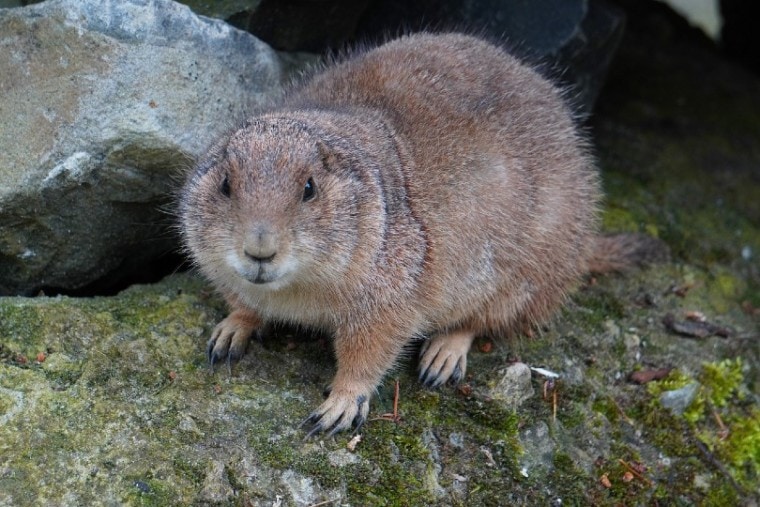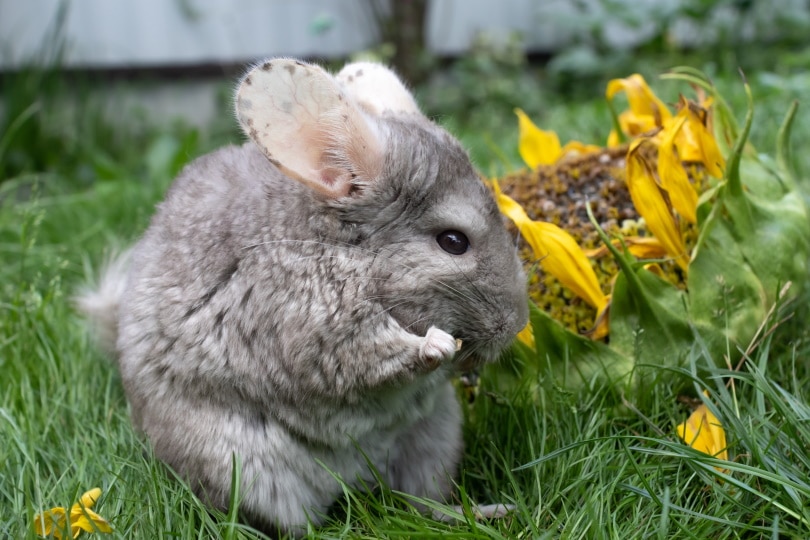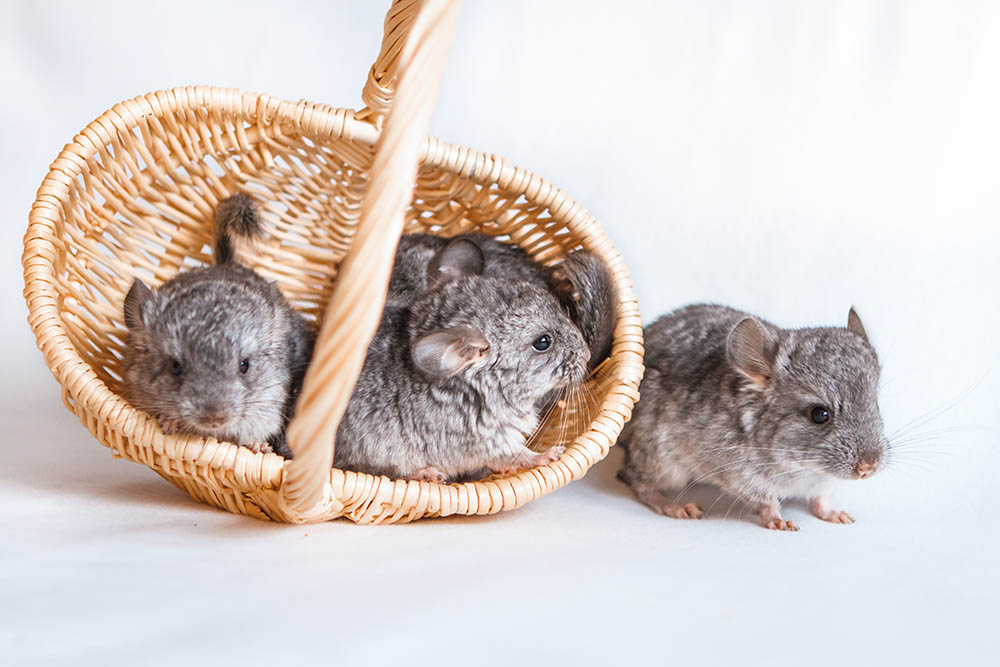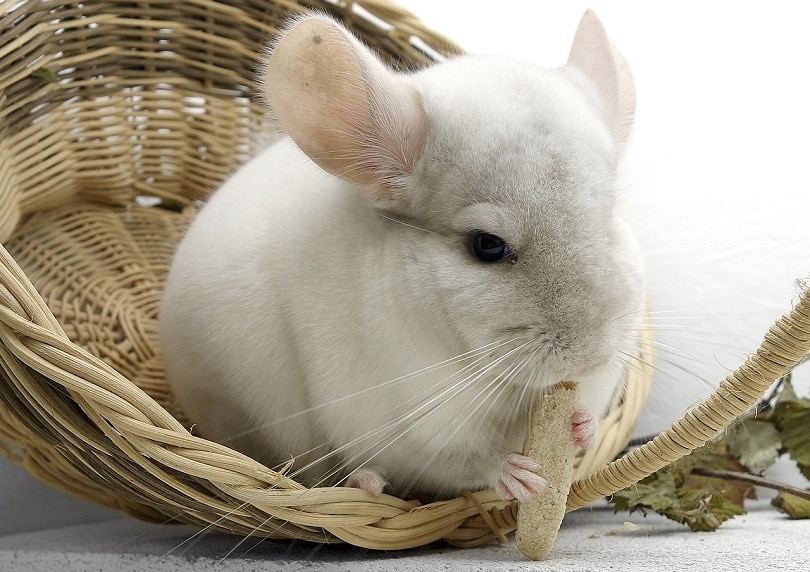
Everyone remembers “Groundhog Day,” the hilarious and surprisingly deep 1993 movie that made Bill Murray famous. What you didn’t know is that as cute as they may seem, groundhogs don’t make great pets.
One simple reason is that they have upper and lower incisors that grow a 1/16 of an inch each week. Their main hobby is to gnaw at everything in their path. If you keep your groundhog in a cage, it may eventually manage to escape. Also, it is complicated to raise baby groundhogs because they need particular care; a breeder with little experience risks killing them.
Do you still need to be convinced? Read on to learn all the reasons that a groundhog shouldn’t be on the list of pets that you want to have in your home.
Quick Facts About Groundhogs

| Scientific Name: | Marmota monax |
| Family: | Sciuridae |
| Type: | Mammal |
| Order: | Rodentia |
| Temperament: | Solitary |
| Lifespan: | 3–6 years in the wild; up to 14 years in captivity |
| Size: | Head and body: 18–24 inches; tail: 7–10 inches |
| Weight: | 13 pounds |
| Diet: | Herbivore |
| Distribution: | North America |
| Habitat: | Forests, woodlots, fields, pastures, hedgerows |
| Other common names: | Woodchuck, groundpig, whistlepig, whistler, thickwood badger |
Why Groundhogs Don’t Make Great Pets
1. They Will Destroy Your Garden
Groundhogs are, at first glance, lovely creatures. They are cute and charming, and their babies are little balls of fluff even more adorable than kittens.
But there is the flip side: They consider your flower beds an “all you can eat” buffet and will feast on your vegetable gardens. So, having a groundhog as a pet would frustrate any gardening enthusiast.
When given a choice, your rodent appreciates the domestic plant more than its wild cousin. Even more, the mammal will nibble the trunk of decorative trees to cut its teeth, and sometimes, it will set its sights on balcony bars. Never forget that chewing is the main habit of the rodent.

2. It Is Illegal in Most States to Keep Native Wild Animals as Pets
Even if it’s legal in your state, you will probably need to have a special permit. Things get even more complicated if you want to go on vacation: You won’t be able to hire a pet sitter because your permit won’t cover it. Also, bringing your groundhog with you would not be a great idea because most places don’t allow exotic pets.
3. Your Vet Must Have the Skills to Treat and Care for Your Groundhog
Do you know a veterinarian who specializes in exotic pets? If not, would your regular vet agree to treat your exotic pet? It is imperative to check this before adopting such an animal, as most vets refuse to treat exotic animals. Without a vet and proper care, you risk your groundhog’s life.

4. You Will Have to Do Extensive Meal Prep
Groundhogs eat a variety of plants, including those in people’s gardens. But they can also eat larvae, other insects, and snails.
Do you have enough time to prepare several small batches of fresh food each day for this animal? You’ll have to because you won’t find groundhog food in pet stores.
5. You Will Need to Build a Special Cage
Groundhogs won’t thrive in a small cage. In addition, they must hibernate during winter, so you will need to build a special “hibernation” cage for your pet. This cage should be at least 4 feet by 8 feet and made of wire mesh. You will also need to include a large nest box with hay, a sandbox for digging, and fresh branches for chewing and sharpening your groundhog’s teeth.

6. You Will Need to Build a Vast and Tall Exercise Yard
A wire fence of 6 feet high is the minimum height. Groundhogs not only dig but they are also good climbers. You will need to watch it constantly to make sure it does not escape.
In addition to their demanding daily needs, be aware that a groundhog can be aggressive if it feels threatened. They do not get along well with dogs or little kids.
Top 10 Weird Things You Didn’t Know About Groundhogs
1. Groundhogs Can Climb Trees to Escape Predators
Thanks to their solid, sturdy legs with strong claws, groundhogs are able to climb trees, although they prefer to spend their time on the ground. Nevertheless, they usually don’t stray too far from their burrows and make sure they can run for cover in the event of a predator like a red fox, coyote, or dog arriving.

2. America’s Most Famous Groundhog Is “Immortal”
The most famous groundhog is Punxsutawney Phil from Pennsylvania. According to American folklore, Phil would be immortal because he was born in 1886. Therefore, Phil has been delivering his predictions for… 135 years! This hard-working groundhog gets its immortality from being fed and pampered by a group of men dressed in black clothes and top hats.
Although Grandpa Phil is “immortal”, he is not the most accurate predictor of the end of winter. Indeed, he doesn’t have a good track record. According to TIME, which in 2017 looked at the previous year’s forecast and then compared it to temperature reports from National Oceanic and Atmospheric Administration weather stations, Phil was only right 36% of the time.
3. It Is One of the Largest Animals in North America to Hibernate
Hibernation is a bit like deep comatose sleep. All the body functions are considerably slowed down so that the accumulated fat is enough to feed the groundhog all winter long. As a result, its temperature drops from 99°F to 37.4°F, and the heartbeat drops from the normal rate of 80 to just four or five beats per minute. The respiratory rate decreases and oxygen consumption is, therefore, significantly reduced. However, when the groundhog comes out of its burrow in the spring, it still has a certain amount of fat it needs.

4. Groundhogs Are the Subject of Medical Research
As one of the largest animals in North America to actually hibernate, the woodchuck has been the subject of much medical research. Scientists are studying its ability to lower body temperature, lower heart rate, and reduce oxygen consumption.
5. Some Groundhogs Are Completely White or Black
These groundhogs have melanism or albinism. In the first case, they are entirely black; in the second, they are white with eyes devoid of pigmentation and whose pink shade is due to the superficial blood vessels. However, due to their brilliant whiteness, albinos are easy prey for their enemies.
6. Groundhogs Utter Whistles and Barks
Outside of its burrow, the groundhog constantly seems alert and emits a shrill whistle alert when it senses danger. When she fights, is badly injured, or is captured by an enemy, she screams. It also makes a sound by grinding its teeth and emitting low barks, the meaning of which is not known.
7. Groundhog Day Is an Old Legend
For North Americans, February 2 is “Groundhog Day”. Tradition has it that on this day when the groundhog is awakened from its winter slumber, it comes out of its burrow. If the sky is overcast, she won’t see her shadow, which means winter will soon. If, on the contrary, the sky is clear, she will be afraid when she sees her shadow. So, she’ll go back and hide in her burrow, and unfortunately, that indicates that winter will last six more weeks.
This old legend is said to be a legacy from the first settlers of Europe, where bears and badgers are credited in some areas with the same behavior. Almost everyone today admits that it is unfounded; nevertheless, it provides a happy diversion generally encouraged by the media in the depths of winter. In reality, the woodchuck rarely comes out of hibernation before March and even later in the north.

8. Groundhogs Will Fight Much Bigger Animals
Its main enemies are the fox, the coyote, and the dog. Although smaller than these predators, the groundhog becomes a fierce and fierce fighter if its life is on the line: it can face any fox, provided it is not attacked by surprise. Woodchucks have often been seen standing up to collie-sized dogs!
9. Groundhogs Taste Like Rabbits
Groundhog meat is a supposedly delicious dish mainly eaten in Switzerland, North America, and France. The flesh of the groundhog can be eaten fried or roasted. It resembles that of the rabbit since both animals mainly eat grass.

10. You Can Die If You Eat Raw Groundhog
According to the National Center for Emerging and Zoonotic Infectious Diseases (NCEZID), at least one person dies each year from bubonic plague in Mongolia, mainly due to the consumption of raw groundhog meat.
The authorities have repeatedly warned residents against raw groundhog meat because it can carry the bacteria Yersinia pestis, which causes the plague. Unfortunately, many people ignore the warnings because they believe that consuming the internal organs of groundhogs is good for their health.
The plague killed millions of people in the Middle Ages in Asia, Europe, and the Middle East. But it has become relatively rare in the 21st century. If cured in time, the disease can be treated with antibiotics. However, its pulmonary form, transmitted by coughing, can be fatal in just 24 to 72 hours.
Final Thoughts
In short, while groundhogs look adorable, they don’t make the best pets due to their demanding needs. Plus, they can easily escape from their cage, climb trees, eat your vegetable patch, and even fight your dog! For these reasons, it is best to continue your observation of these charismatic animals only in their natural habitat.
Related read:
- Do Groundhogs Attack Chickens? Vet-Reviewed Tips to Protect Your Flock
- Hedgehog vs. Groundhog: Visual Differences & Characteristics (With Pictures)
Featured Image Credit: Licht-aus, Pixabay








